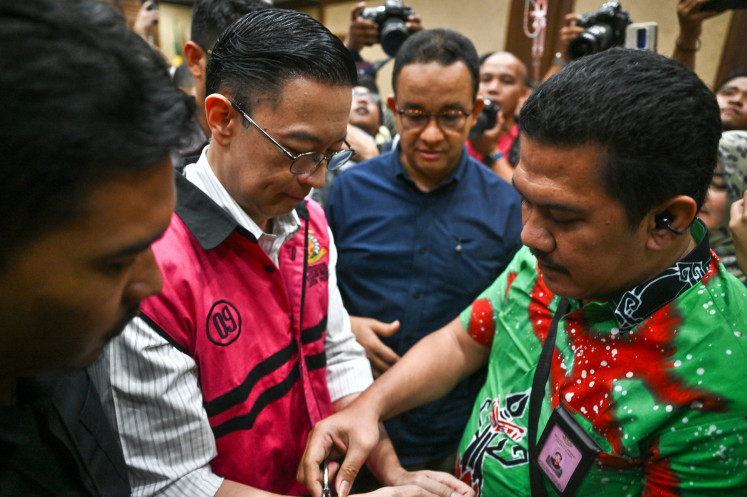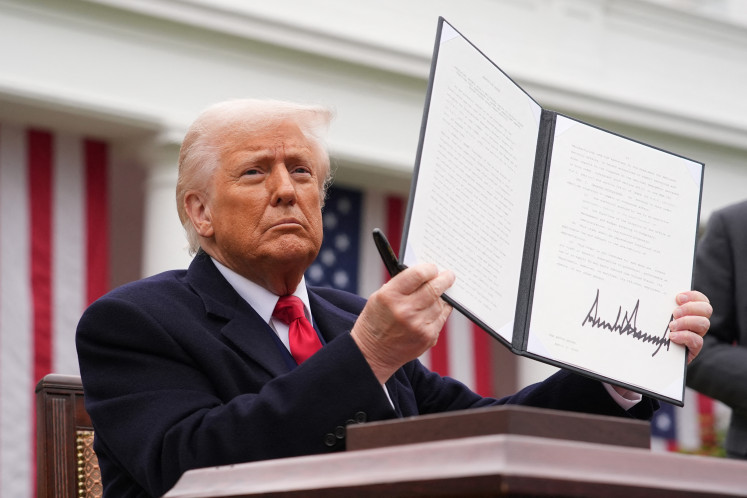Popular Reads
Top Results
Can't find what you're looking for?
View all search resultsPopular Reads
Top Results
Can't find what you're looking for?
View all search resultsDouble digit sales growth expected in 2012
The Indonesian Motorcycle Industry Association (AISI) estimates that the country’s motorcycle sales will continue to expand at a double digit growth rate next year despite the worsening global economic outlook
Change text size
Gift Premium Articles
to Anyone
T
he Indonesian Motorcycle Industry Association (AISI) estimates that the country’s motorcycle sales will continue to expand at a double digit growth rate next year despite the worsening global economic outlook.
AISI chairman Gunadi Sindhuwinata said on Tuesday in Jakarta that motorcycle sales would grow by around 10 percent to 9 million units or “slightly higher” thanks to continued high domestic demand.
However, Gunadi implicitly acknowledged that next year’s sales growth might see a slight decline from this year, with estimated sales of 8.2 million units, as the faster growth of the past two years was due to the recovery from the 2008 economic crisis.
“We’re still aiming for 10 percent growth with an assumption that the economy will grow by 6.7 percent next year,” he said.
AISI data shows that motorcycle sales reached 7.58 million units from January-November this year, on track to achieve the full-year estimate of 8.2 million with an annual growth of 12 percent.
Gunadi said that sales growth would be mainly driven by demand from regions outside Java as the Java market, especially in Greater Jakarta and West Java with 15 percent of sales nationwide, was about saturated.
“Sales will be dispersed in areas outside Java as the distribution of income has been improving due to a boom in sectors like mining, plantation and fisheries. Sales in Jakarta will be maintained mainly through customers replacing their old motorcycles with new ones,” he explained.
AISI vice chairman Johannes Loman previously said the current interest rate levels and the capital liquidity in the financial industry would further sustain growth as 75 percent of overall motorcycle purchases were backed by leasing companies.
Loman had said that the movement in prices of the country’s main export commodities, such as palm oil and rubber, also affected sales of motorcycles, particularly in areas outside Java.
According to Gunadi, Indonesia’s motorcycle market still has room to grow in the future as the ratio of motorbike ownership to the population is still one unit per seven people, lower than neighboring countries with one unit per three people.
The country’s strong economic fundamentals in the past two years, along with its high domestic consumption, have made Indonesia, a home to more than 240 million, an attractive market for the automotive industry.
Besides motorcycle sales, car sales have also seen enormous growth. During the January-September period, car sales reached 659,857 units, according to the Indonesian Automotive Industry Association (Gaikindo) and are projected to surpass 870,000 units by the end of the year, rising by 19 percent from 2010.










